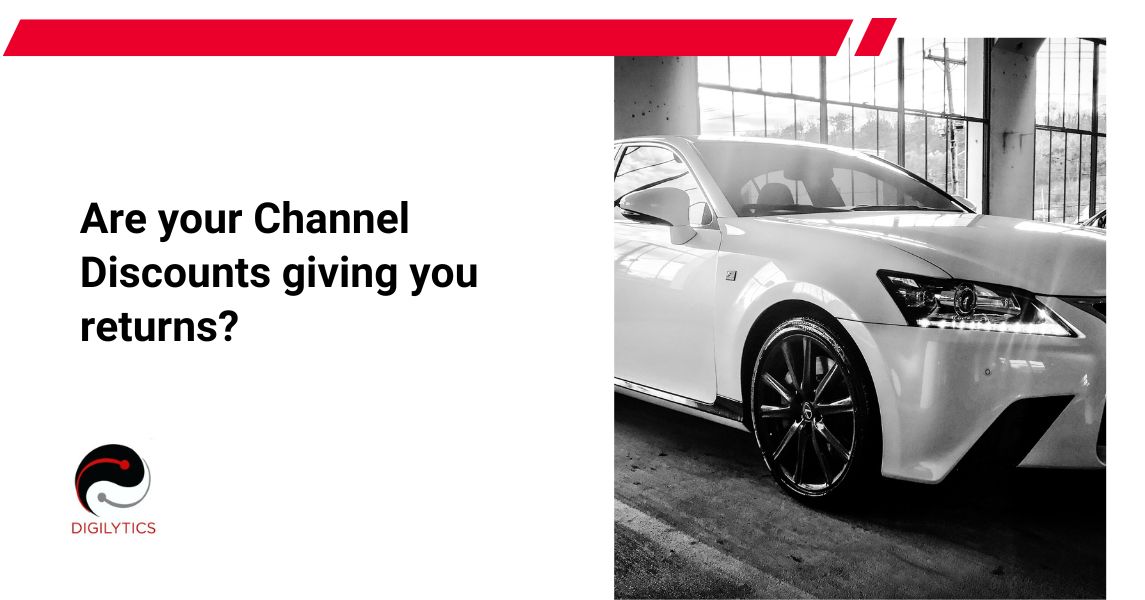Are your channel discounts giving you returns?
Introduction
Indian Auto Aftermarket is a very fragmented market with many channel partners starting from the OEM/Component Manufacturer and going through distributors, wholesalers, retailers and ultimately to the end consumers. OEMs in India tend to dominate in the distribution channel since consolidation among channel partners has not happened in India unlike USA where due to consolidation channel partners have a much bigger say than OEMs. Still when it comes to price and competition channel discounts become important for both the OEMs and the Component manufacturers to gain competitive advantage in a fragmented market. Some manufacturers might be only selling to distributors, and some might be selling to both distributors and retailers. This leads to the manufacturers deciding two things, which Auto parts to promote among the channel partners and how much discounts to offer among various channel partners. When it comes to which part to sell, managers may look at various factors like overstocked, aged and obsolete parts. So, say if manager decides to sell aged inventory then it might be that the part is sold at loss since it might not sell otherwise. If we see high margin part, it might help in gaining market share if manager decides to give discount on that part. Also, another trick is to sell fast-moving items in bulk for a discount.
Trade Promotion Effectiveness
Measuring Trade Promotion effectiveness is a critical aspect of Trade Marketing in Auto Aftermarket so that managers can study the impact promotion is having on sales. Some of the common metrics being used to measure Trade Promotion are as follows:
- . ROI: It is a common metric used to measure the impact of Trade Promotion and calculated by dividing net profit from promotion by the cost of the same. The assessment can be done as to when ROI was positive or negative and accordingly promotion was profitable or non-profitable respectively.
- Sales Lift: It is used to assess the impact of Trade Promotion on sales. It is found out by comparing the percentage increase in sales in the promotion period compared to non-promotion period. It is a good indicator as to whether the promotion has been successful or not.
- Incremental Volume: This is the additional volume of products sold during the promotion period as compared to non-promotion period.
- Market Share: Tracking changes in market share during the promotion period can give insights into the success of promotion schemes.
Trade Promotion Management as a solution
When it comes to Trade Promotion it essentially means the Promotion Schemes which are being run by manufacturer or any other entity like Distributor or retailer in the distribution channel. Many times, there is no visibility regarding the promotion schemes run by the managers and decision to whether continue, discontinue, or change promotion schemes is based on intuition rather than using data analysis and models. These schemes run country-wide and there is no granular analysis of region-wise scheme performance. In addition to discounts other factors also must be taken into account to optimize the promotion. For example, factors like Scheme Type, Scheme Category, range quantity under the Trade Promotion also have to be taken into account. The goal of the manager should be to improve overall Trade Promotion ROI instead of just additional sales from few discount schemes. This way the Trade Promotion strategy tends to remain for long-term in a fragmented market where distribution tends to be of a very complex nature.
Digilytics RevUP Promote for Trade Promotion Managementt
Digilytics RevUP promote is a module of RevUP for Trade Promotion and for assessing the effectiveness of the promotion schemes run by the company. The benefits of RevUP Promote are as follows:
- Improving Promotion effectiveness
- AI-based Trade Promotion score to improve visibility of Trade Promotion schemes and assess the schemes w.r.t geo and brand
- Evaluating sales lift and ROI
- Simulate Predicted results.
About Digilytics AI
At Digilytics AI, we aim to drive business value leveraging our platform. In an ever-crowded world of clever technology solutions looking for a problem to solve, our solutions start with a keen understanding of what creates and what destroys value in your business. Founded in 2014, by Arindom Basu, the leadership of Digilytics is deeply rooted in leveraging disruptive technology to drive profitable business growth. With over 50 years of combined experience in technology-enabled change, the Digilytics leadership is focused on building a -values-first firm that will stand the test of time.
Follow us on : LinkedIn
While you are here, other top articles you might be interested in
Do you get the right insights from your sales data in auto aftermarket The Importance of Data Security for Auto Aftermarket Companies Exceed your sales goals in auto aftermarket with Digilytics RevUP 3C checks: 3 reasons why you need AI to elevate your revenues in the auto aftermarket How AI is transforming the auto aftermarket industry
